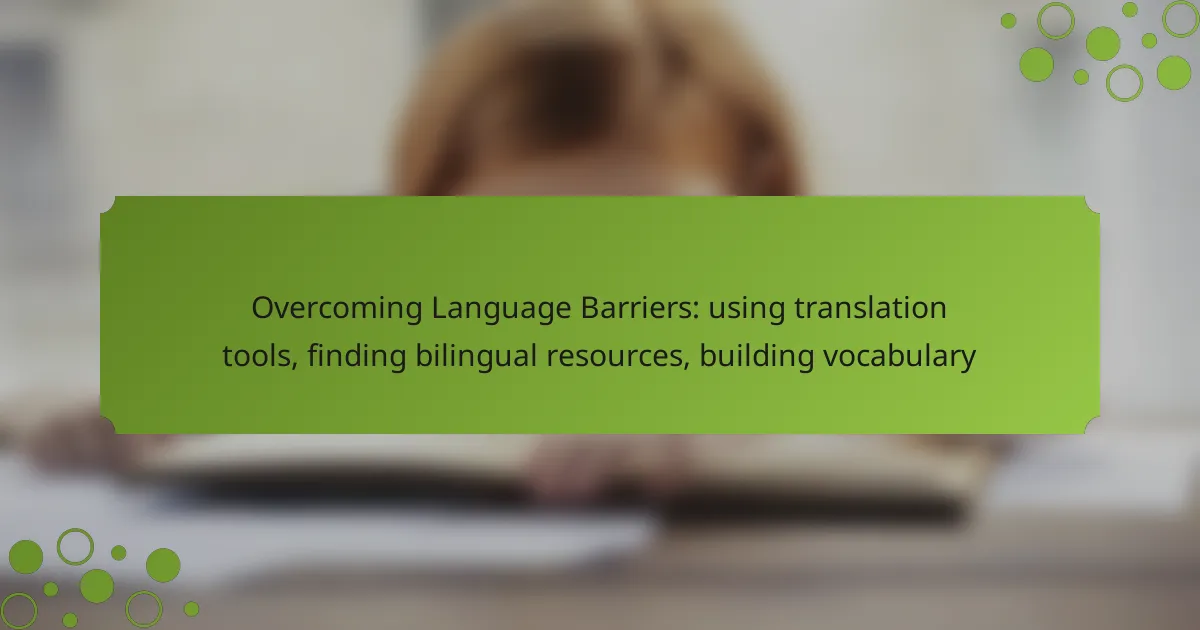Overcoming language barriers is crucial for effective communication in our increasingly globalized world. Utilizing translation tools and bilingual resources can greatly enhance understanding and engagement with different cultures. Additionally, building a strong vocabulary is essential for improving language skills, enabling clearer expression and comprehension in conversations and texts.

How can translation tools help overcome language barriers?
Translation tools can significantly reduce language barriers by providing quick and accessible translations for text and speech. They facilitate communication across different languages, making it easier to understand and engage with diverse cultures.
Google Translate features
Google Translate offers a variety of features that enhance its usability, including text translation, voice input, and image translation through camera capture. Users can translate text in over 100 languages, making it a versatile tool for travelers and learners alike.
One notable feature is the ability to save translations for offline use, which is particularly useful in areas with limited internet connectivity. Additionally, Google Translate provides a conversation mode that allows real-time dialogue between speakers of different languages.
DeepL accuracy advantages
DeepL is known for its high accuracy and natural-sounding translations, often preferred for professional and nuanced texts. It uses advanced neural network technology to understand context better than many other tools, resulting in more coherent translations.
Users often report that DeepL handles idiomatic expressions and complex sentences more effectively, making it a strong choice for business communications or academic work. However, it supports fewer languages than Google Translate, which may limit its use in certain regions.
Microsoft Translator capabilities
Microsoft Translator provides a robust set of features, including text, speech, and image translation across multiple platforms. It supports over 70 languages and integrates well with other Microsoft products, such as Word and Outlook, enhancing productivity for users in professional settings.
One unique aspect is its ability to facilitate group conversations, allowing multiple users to communicate in different languages simultaneously. This feature is particularly beneficial for international meetings or events, ensuring everyone can participate regardless of their native language.
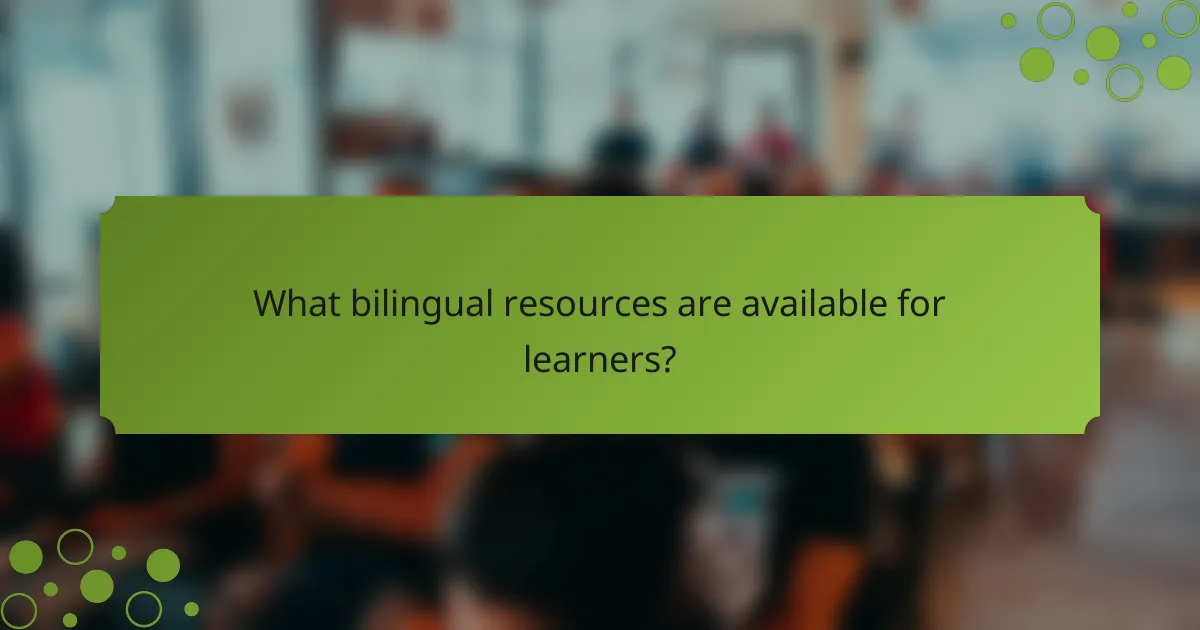
What bilingual resources are available for learners?
Bilingual resources for learners include tools and platforms that facilitate language acquisition through direct translation, educational content, and real-world practice. These resources can significantly enhance vocabulary and comprehension by providing context and practical usage examples.
Online bilingual dictionaries
Online bilingual dictionaries are essential tools for learners, offering translations and definitions across multiple languages. They often provide example sentences, pronunciation guides, and usage notes, which help learners understand context and nuances.
Popular options include WordReference, Linguee, and Reverso. These platforms allow users to search for words or phrases and see how they are used in real-life contexts, making them invaluable for building vocabulary.
Bilingual educational websites
Bilingual educational websites offer structured learning materials, including lessons, exercises, and quizzes in two languages. These sites often cater to various proficiency levels and can be tailored to specific learning goals.
Examples include Duolingo, Babbel, and BBC Languages. Many of these platforms are free or offer affordable subscription plans, making them accessible for learners worldwide.
Language exchange platforms
Language exchange platforms connect learners with native speakers for mutual language practice. These platforms facilitate conversation through text, voice, or video, allowing users to improve their speaking and listening skills in a practical setting.
Popular platforms like Tandem and HelloTalk enable users to find partners based on language preferences and interests. Engaging with native speakers can enhance fluency and cultural understanding, making it a valuable resource for language learners.
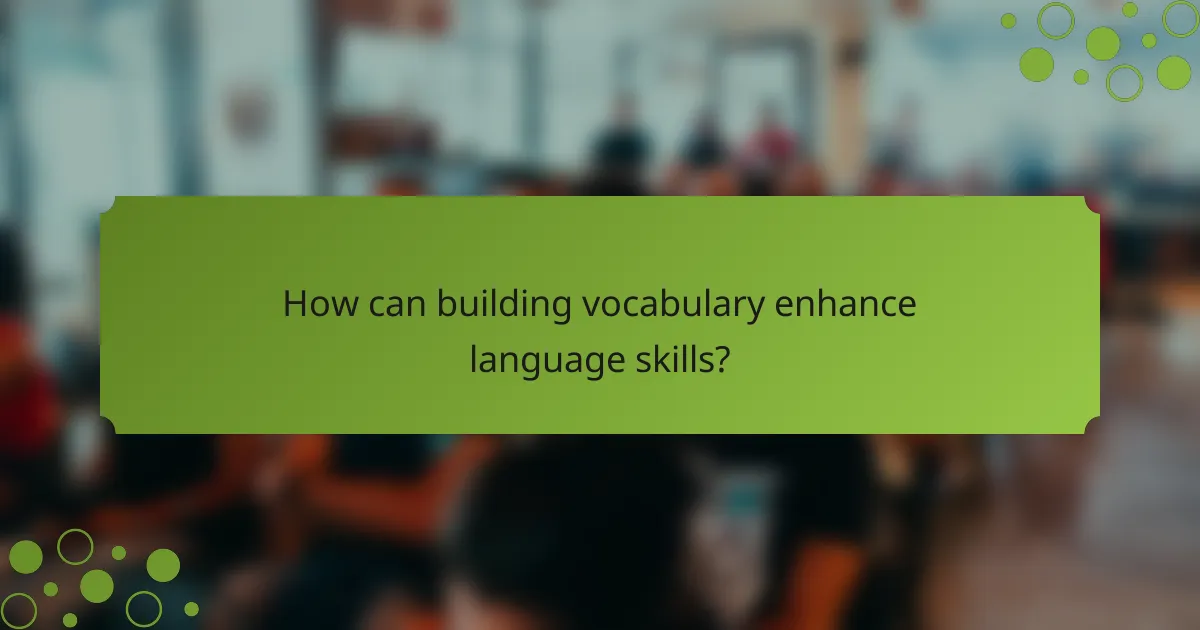
How can building vocabulary enhance language skills?
Building vocabulary is essential for enhancing language skills as it allows for better comprehension and expression. A robust vocabulary enables individuals to communicate more effectively and understand nuances in conversation and text.
Flashcard apps like Anki
Flashcard apps such as Anki are effective tools for vocabulary building because they utilize spaced repetition, which helps reinforce memory retention. Users can create custom decks or download shared decks to learn new words in context.
To maximize effectiveness, focus on adding images or example sentences to your flashcards. This approach not only aids memorization but also helps you understand how words are used in different contexts.
Vocabulary-building courses
Vocabulary-building courses often provide structured learning paths that can significantly enhance your language skills. These courses typically include interactive exercises, quizzes, and assessments to track progress.
When selecting a course, consider your current level and specific goals. Many online platforms offer courses tailored to different proficiency levels, from beginner to advanced, allowing for a more personalized learning experience.
Contextual learning techniques
Contextual learning techniques involve acquiring vocabulary through real-life situations, such as reading books, watching movies, or engaging in conversations. This method helps learners understand how words fit into various contexts, making them easier to remember and use.
To implement this technique, try to immerse yourself in the language as much as possible. Join language exchange groups or participate in local events where the target language is spoken, enhancing both vocabulary and conversational skills.
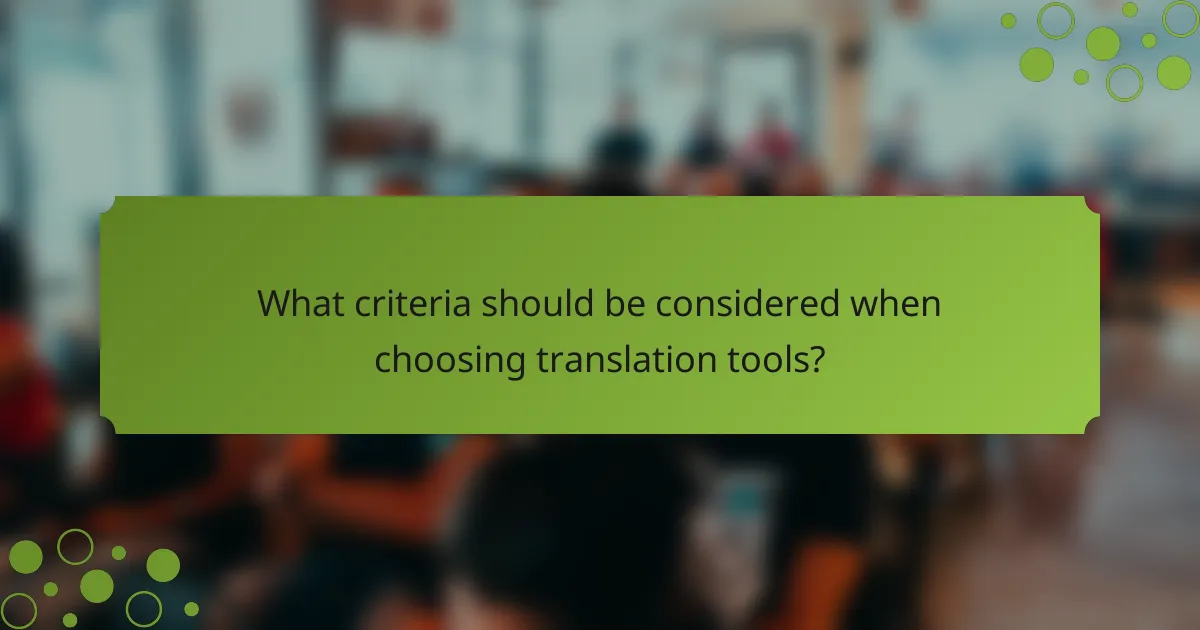
What criteria should be considered when choosing translation tools?
When selecting translation tools, consider user interface, accessibility, supported languages, and dialects. These factors can significantly impact usability and effectiveness, ensuring that the tool meets your specific language needs.
User interface and accessibility
The user interface of a translation tool should be intuitive and easy to navigate. Look for features like drag-and-drop functionality, clear menus, and customizable settings to enhance your experience. Accessibility options, such as screen reader compatibility and multilingual support, are also crucial for users with different needs.
Evaluate whether the tool is available on multiple platforms, such as web, mobile, and desktop. This flexibility allows you to access translations anytime and anywhere, which is particularly useful for travelers or remote workers.
Supported languages and dialects
Ensure that the translation tool supports the specific languages and dialects you require. Some tools may excel in major languages like Spanish or Mandarin but offer limited options for regional dialects or less common languages.
Check if the tool provides contextual translations, as this can greatly enhance accuracy. For example, a tool that understands the nuances between American and British English can prevent miscommunication. A good practice is to test the tool with sample phrases in your target language to assess its effectiveness.
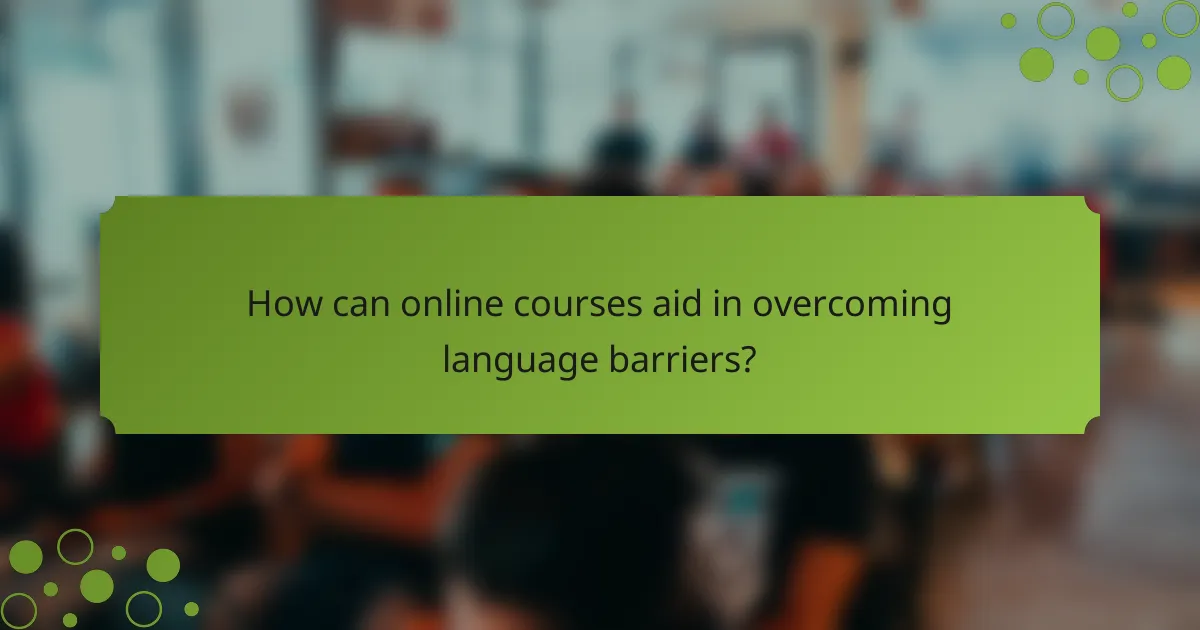
How can online courses aid in overcoming language barriers?
Online courses can significantly help individuals overcome language barriers by providing structured learning environments and access to diverse resources. These courses often incorporate interactive elements and personalized learning paths, making language acquisition more engaging and effective.
Interactive language courses
Interactive language courses utilize multimedia tools such as videos, quizzes, and live discussions to enhance learning. These elements encourage active participation, which can improve retention and comprehension. For instance, platforms like Duolingo and Babbel offer gamified experiences that make learning fun and less intimidating.
Additionally, many interactive courses include community features, allowing learners to practice with peers or native speakers. This real-time interaction can help build confidence and fluency, as learners can receive immediate feedback and support.
Personalized learning paths
Personalized learning paths in online courses tailor the educational experience to individual needs and goals. By assessing a learner’s proficiency level and preferred learning style, these courses can adjust content and pace accordingly. For example, a beginner might focus on basic vocabulary and phrases, while an advanced learner could tackle complex grammar and conversation skills.
Moreover, personalized paths often include progress tracking, enabling learners to see their improvements over time. This feature can motivate users to stay committed and engaged, ultimately leading to more successful language acquisition. When selecting a course, look for options that offer customization to ensure the best fit for your learning journey.

What are the emerging trends in language learning technology?
Emerging trends in language learning technology focus on enhancing user engagement and accessibility through innovative tools. These advancements include AI-powered applications and augmented reality experiences that make learning more interactive and effective.
AI-powered language apps
AI-powered language apps utilize machine learning algorithms to personalize the learning experience. These applications can adapt to a user’s proficiency level, learning pace, and preferred topics, providing tailored exercises and feedback.
Popular examples include Duolingo and Babbel, which offer gamified lessons that keep learners motivated. Users can expect features like speech recognition for pronunciation practice and instant translation capabilities, making learning more intuitive.
Augmented reality in language learning
Augmented reality (AR) in language learning immerses users in real-world contexts where they can practice language skills. This technology overlays digital information onto the physical environment, allowing learners to interact with objects and scenarios in their target language.
For instance, apps like Mondly use AR to create virtual conversations with animated characters, enhancing vocabulary retention and conversational skills. As AR technology advances, it is expected to become more accessible, providing learners with engaging and practical experiences.
